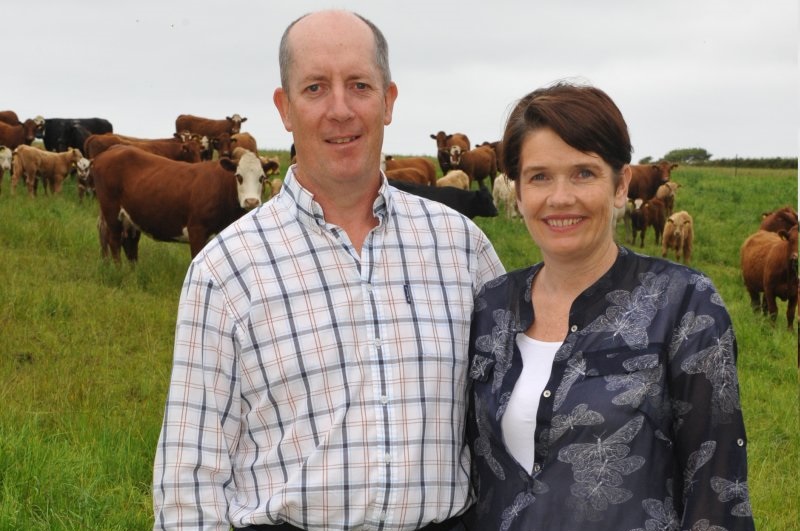
An intensive bull beef finishing system could help a Ceredigion suckler enterprise add value to cattle.
Huw and Meinir Jones want to maximise herd efficiency, productivity and profitability at Bryn, a Farming Connect demonstration site near Cardigan.
One of the projects they have embarked on as part of the scheme is assessing efficiency of producing finished cattle compared to stores.
Fifteen mainly Charolais bulls will be finished together with some of their heaviest Hereford bulls.
These will be fed an average of 8–9kg of feed/head/day during the finishing period and straw will be fed ad lib to provide fibre in the diet and to lower the risk of acidosis.
Steer and heifer stores will receive 2.5kg/head/day over the winter, and a further 1kg a day at the end of summer if needed to hit specification.
Feed will be mostly home-grown together with a blend containing key nutrients to achieve the correct nutrition.
Finishing cattle could also minimise the risk of TB restricting the business from selling cattle as stores.
In its first year as a demonstration site, Bryn farm is using benchmarking as a management tool to identify key areas for herd improvement.
Mr and Mrs Jones are targeting cow efficiency and fertility, herd management and calf growth rates.
The couple have already improved herd performance by switching to maternal cattle breeds and by reducing the calving period to 10 weeks
They have selected bulls with good maternal and terminal Estimated Breeding Values (EBVs) for replacements and sale calves.
Out-wintering cattle on kale and stubble turnips and creep feeding calves have also lifted performance.
Mr and Mrs Jones aim to build on these further through benchmarking and by setting key performance indicators (KPIs).
One of these is calves reared per cow – they want to increase this from the current 88% to 95% through ongoing calving records, pregnancy diagnosis and service dates.
If they can achieve this, at the current average sale price per head of £750/animal, it could capture extra output totalling £4,500.
Cow efficiency is also being targeted – the Jones’ want to increase calf weight as a percentage of cow weight to 50% or higher.
Across the herd, there will be ongoing testing for diseases such as BVD and Johne’s to improve overall health.
